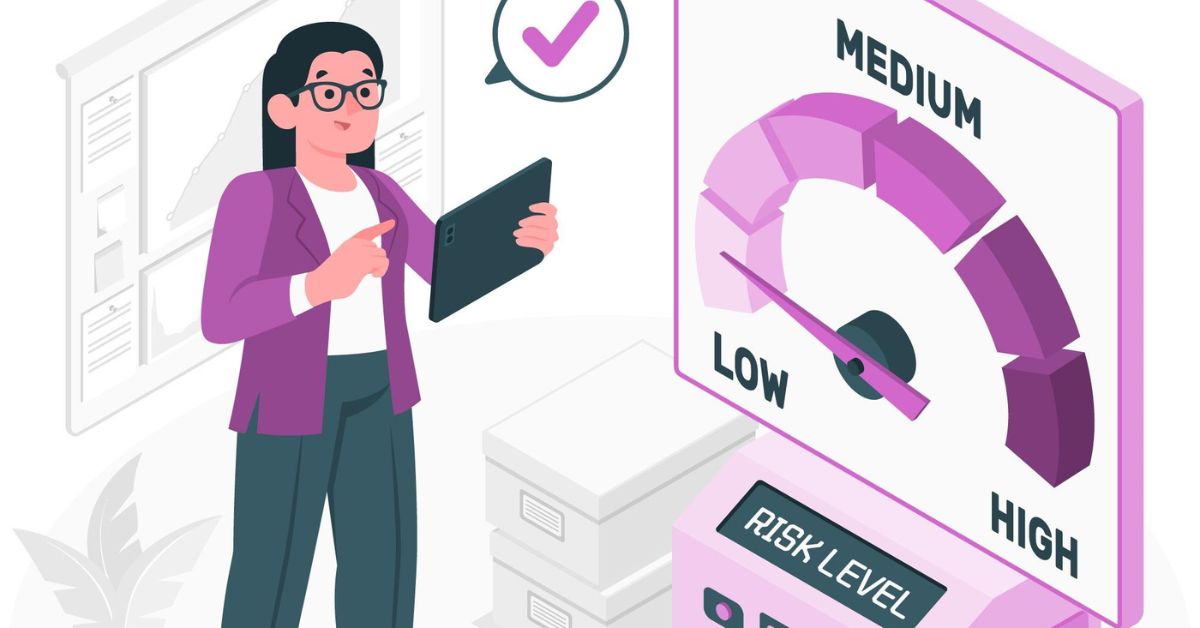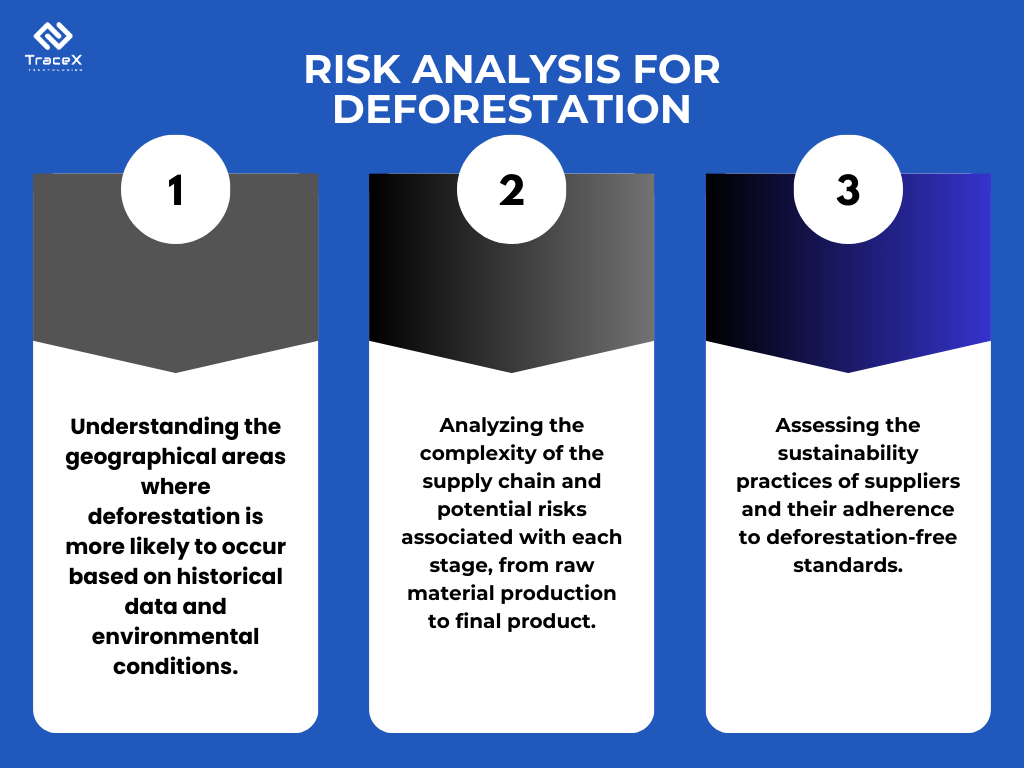Contact: +91 99725 24322 |
Menu
Menu
Quick summary: Explore the essential components of Compliance Risk Assessment for the EU Deforestation Regulation (EUDR). This blog delves into identifying, evaluating, and mitigating risks associated with deforestation in supply chains. Learn how to ensure regulatory compliance and implement effective risk management strategies to maintain sustainability and avoid penalties.

The EUDR presents a complex challenge for businesses: accurately assessing and mitigating the risk of deforestation within their supply chains. This requires a deep understanding of the regulation and a systematic approach to risk identification and management. Compliance risk assessment process plays a critical role in ensuring that supply chains are deforestation-free.
As the European Union Deforestation Regulation (EUDR) approaches its enforcement date of January 1, 2025, companies across various industries are facing increased pressure to align with its stringent requirements. The EUDR aims to combat global deforestation and forest degradation by imposing strict regulations on commodities linked to these issues.
A robust risk management system is essential for navigating the complexities of the EUDR. By combining data analytics, ESG factors, and stakeholder collaboration, businesses can proactively identify, assess, and mitigate potential risks.
The EU Deforestation Regulation (EUDR) is a landmark piece of legislation designed to tackle the environmental impact of deforestation and forest degradation. Officially approved by the European Parliament on April 19, 2023, and published in the EU Official Journal on June 9, 2023, the EUDR mandates that businesses demonstrate that certain commodities entering the EU market are not linked to deforestation or forest degradation. These commodities include soy, palm oil, coffee, cocoa, rubber, wood, and cattle and their derivative products.
Effective risk assessment under the EUDR involves several critical components that businesses must address to ensure compliance. Here’s a breakdown of these key components:
To comply with the EUDR, businesses must first understand the various risk factors associated with their supply chains. This involves evaluating the potential for deforestation and forest degradation based on several criteria, including:
A crucial part of the risk assessment process is the collection and analysis of data. This includes:
Due diligence is a proactive approach to identifying and mitigating risks in the supply chain. Under the EUDR, businesses must implement due diligence measures to ensure compliance:
Documentation and reporting are key elements of the risk assessment process. Businesses must:
Navigating the EUDR risk assessment requirements can be challenging for businesses, particularly those with complex supply chains.
To effectively navigate the EUDR risk assessment requirements and address the challenges mentioned above, businesses should consider the following best practices:
Risk analysis plays a crucial role in ensuring compliance with the EU Deforestation Regulation (EUDR), providing businesses with the tools to assess and mitigate the potential risks of deforestation within their supply chains. Risk analysis is essential for identifying and assessing potential risks related to deforestation and forest degradation within a company’s supply chain. Under the EUDR, companies must demonstrate that their products are sourced from deforestation-free areas, which requires a comprehensive understanding of where and how deforestation might occur. Effective risk analysis helps companies pinpoint areas where deforestation risks are highest, allowing them to take proactive measures to mitigate these risks and ensure compliance.
To comply with the EUDR, businesses must reliably identify the risks of both deforestation and forest degradation. This involves evaluating various factors, such as land use changes, historical deforestation patterns, and the current state of forest cover in sourcing areas. Identifying these risks is crucial for developing strategies to avoid sourcing from areas where deforestation is a concern. Effective risk analysis relies on accurate and relevant data. While many public data sources provide information on deforestation and forest degradation, their reliability and specificity to EUDR requirements can vary. Businesses must carefully select data sources that offer precise and up-to-date information relevant to their supply chains. This might include satellite imagery, remote sensing data, and land-use databases.

Once risks are identified, businesses must implement strategies to mitigate them. They need to prioritize suppliers and sourcing regions with lower deforestation risks, work closely with suppliers to ensure they adhere to deforestation-free practices and providing support to improve their sustainability efforts. They need to continuously monitor sourcing areas and supply chains to detect and address any emerging deforestation risks. Risk analysis should be integrated into the broader compliance processes to ensure that all aspects of the supply chain align with EUDR requirements. This includes incorporating risk analysis findings into due diligence procedures, compliance documentation, and reporting processes.
Technology solutions can enhance risk analysis by providing advanced tools for data collection, analysis, and visualization. High-resolution satellite imagery helps monitor land-use changes and deforestation patterns in real-time. GIS platforms enable detailed mapping and analysis of supply chain data, facilitating better risk assessment. Predictive analytics tools use historical data and trends to forecast potential deforestation risks and guide decision-making.
TraceX offers a comprehensive suite of solutions designed to help businesses navigate the EUDR risk assessment requirements effectively. Our platform provides:
Partnering with TraceX ensures that you have the tools and support needed to achieve and maintain EUDR compliance, addressing the complexities and challenges of risk assessment.
The EU Deforestation Regulation (EUDR) represents a significant step towards combating global deforestation and promoting sustainable sourcing practices. Effective risk assessment is crucial for ensuring compliance with the regulation and demonstrating a commitment to environmental responsibility. By understanding the key components of EUDR risk assessment, addressing common challenges, and implementing best practices, businesses can navigate the regulatory landscape with confidence.
As the deadline approaches, leveraging advanced tools and expertise, such as those offered by TraceX, will be instrumental in achieving compliance and driving positive environmental impact. Start your journey towards EUDR compliance today and join the global effort to protect our planet’s vital forests.
